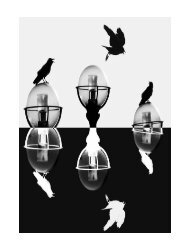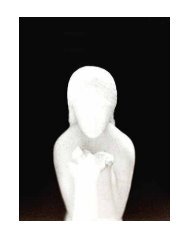Odds and Ends Essays, Blogs, Internet Discussions, Interviews and Miscellany
Collected essays, blogs, internet discussions, interviews and miscellany, from 2005 - 2020
Collected essays, blogs, internet discussions, interviews and miscellany, from 2005 - 2020
Create successful ePaper yourself
Turn your PDF publications into a flip-book with our unique Google optimized e-Paper software.
Marjorie Perloff:
‘It’s very striking. The reader is propelled forward, thematically and mythologically. The result is
extremely interesting’.
Hank Lazer:
‘An engaging avalanche of a poem, and I like the collision of various registers of language throughout
the poem. Overall, a feel of contemporary myth-dream propelled narrative to it. A truly contemporary
quest’.
Andrew Duncan:
‘It negates a whole repertoire of well-loved effects and also demands the reader to switch off their
routine response and find a new way of reacting to the text. Carrier, presented as one long continuous
strip, has a straightforward phonetic organisation: every line is three words long. This disconnects the
line break from the flow of sense of the text. The telltales, which show someone’s emotional state,
which make it possible to slip into the rhythm of a text and a situation, are effaced. The text thus breaks
free from the limits of a soul and could for example be the voices of several different people, standing at
different points of a situation. It ceases to be owned by a personality, which we could try to reconstruct
in order to identify with it and share what it owns’.
Pam Brown:
‘The poem is breathlessly written, imbued with distinctive imagining and, perhaps surprisingly, it also
maintains a satisfying, dynamic-yet-steady rhythm, reading like a long, measured monologue or song.
Side intersperses antiquated traces that sometimes suggest classic fairy-tales - robes, kingdoms,
forests, parlours, maidens, minstrels, pilgrims, with a contemporary everyday lexicon of cybernetics
and with plain speech. The made-up language overtakes the poet intrinsically and emphasises the
suffusion of feeling that pulses throughout the poem’.
Adam Fieled:
‘Reading the poem is like riding on a high-velocity train; it doesn’t get sluggish, and there are no breaks
in the continuity of the sustained, rapid rhythm. This is a poem that takes what someone like Barrett
Watten did and extends its range. It has the kind of heart and soul that Watten does not, yet it maintains
the sleek feeling and pungent sharpness of Watten’.
John Couth:
‘All the way through to the poem’s conclusion, with its implied continuation, the reader will have
embarked down an extraordinary route of languages, registers and vocabularies, which function to
arrest, surprise and disrupt, languages that flow together, collide and cut across each other’s current
like a plaited waterway. In turn, this flow has been enriched by the assimilation of artefacts from
different generations of writers; these deepen the work interlacing it with echoes and experiences from
different times and cultures. The integration of so many disparate elements into one cogent construct is
the poem’s triumph’.
John M. Bennett:
‘Say, this is an excellent piece’.
Michael Rothenberg:
‘I like it a lot’.
Reviews of it can be found at the following sites:
57




